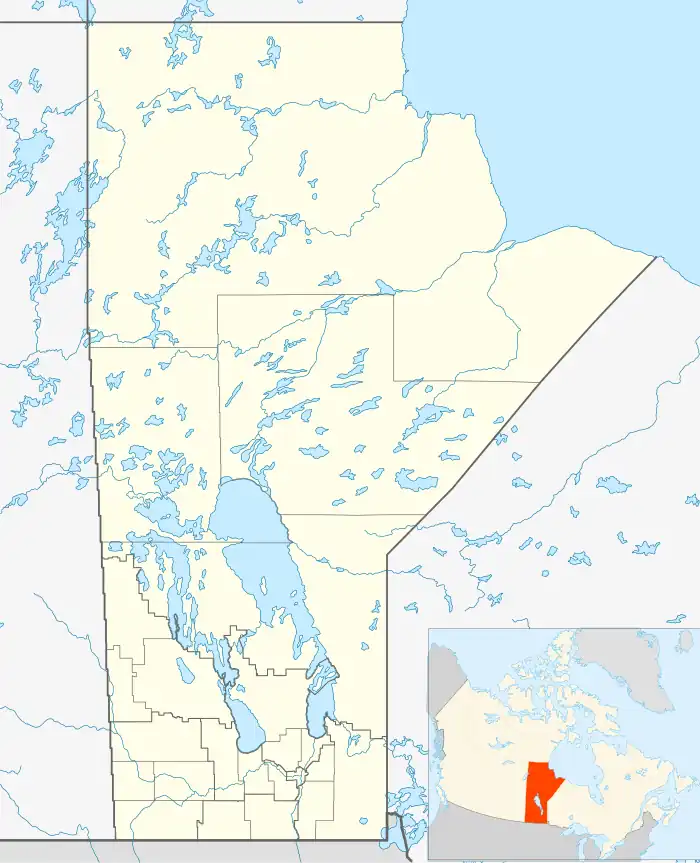Cormorant | |
|---|---|
 Cormorant Location of Cormorant in Manitoba | |
| Coordinates: 54°13′26″N 100°36′1″W / 54.22389°N 100.60028°W | |
| Country | |
| Province | |
| Region | Northern Region |
| Census Division | No. 21 |
| Government | |
| • Mayor | Edie Turner |
| • Governing Body | Cormorant Community Council |
| • MP | Niki Ashton |
| • MLA | Frank Whitehead |
| Time zone | UTC−6 (CST) |
| • Summer (DST) | UTC−5 (CDT) |
| Postal Code | R0B 0G0 |
| Area code | 204 |
| NTS Map | 063K02 |
| GNBC Code | GAFMY |
Cormorant is an unincorporated community in the Canadian province of Manitoba on the east shore of Cormorant Lake about 80 kilometres from The Pas. The community is in the west central region of the province. It has been an Aboriginal and First Nations campsite dating back to the 1900s. The post office in the community was established in July, 1928.[1]
As of 2001 the community had a population of 400 in 139 households. Community services include local water supply, waste disposal, Cormorant School, Community hall, and Cormorant Lodge.[2]
It is governed by a mayor and council.
Fishing, trapping and logging are the primary industries.
Cormorant is served by Via Rail's Winnipeg–Churchill rail line at the Cormorant railway station.
| Preceding station | Following station | |||
|---|---|---|---|---|
| Dering toward Churchill |
Winnipeg–Churchill | Halcrow toward Winnipeg | ||
| Former services | ||||
| Preceding station | Canadian National Railway | Following station | ||
| Rawebb toward Churchill |
Hudson Bay Railway | Halcrow toward The Pas | ||
Demographics
In the 2021 Census of Population conducted by Statistics Canada, Cormorant had a population of 307 living in 104 of its 123 total private dwellings, a change of -6.1% from its 2016 population of 327. With a land area of 18.37 km2 (7.09 sq mi), it had a population density of 16.7/km2 (43.3/sq mi) in 2021.[3]
References
- ↑ http://www.collectionscanada.gc.ca/databases/post-offices/001001-100.01-e.php Library and Archivers of Canada - Postmaster database
- ↑ "Archived copy" (PDF). Archived from the original (PDF) on October 6, 2012. Retrieved January 8, 2010.
{{cite web}}: CS1 maint: archived copy as title (link) - ↑ "Population and dwelling counts: Canada and designated places". Statistics Canada. February 9, 2022. Retrieved September 3, 2022.
- ↑ "Corrections and updates: Population and dwelling count amendments, 2011 Census". Statistics Canada. February 14, 2013. Retrieved February 16, 2013.
- ↑ "2011 Community Profiles". 2011 Canadian Census. Statistics Canada. March 21, 2019. Retrieved July 14, 2012.
- ↑ "2006 Community Profiles". 2006 Canadian Census. Statistics Canada. August 20, 2019.
- ↑ "2001 Community Profiles". 2001 Canadian Census. Statistics Canada. July 18, 2021.
.jpg.webp)